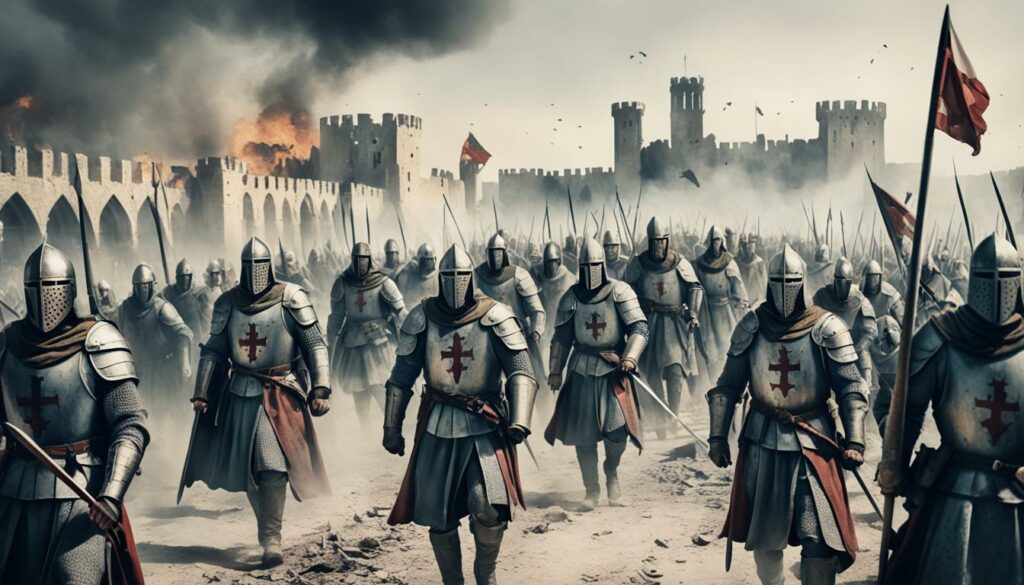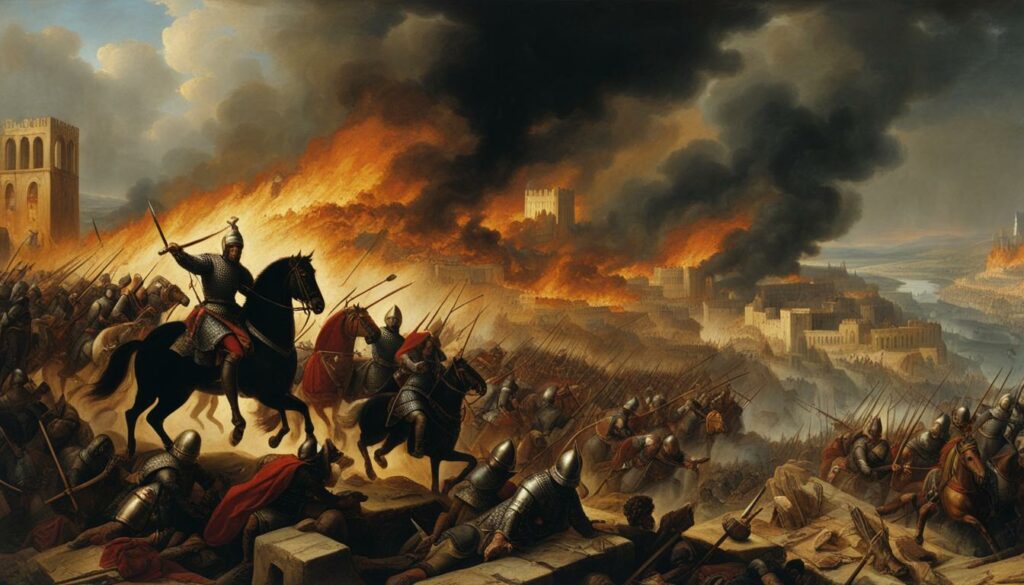Welcome to this insightful article on the 4th Crusades, where we will delve into the historical context, including the conquest of Constantinople, and explore their lasting impact. The 4th Crusades, a series of military campaigns authorized by the Catholic Church in the 13th century, significantly shaped the medieval world. We will uncover the key events of the Fourth Crusade, examine the profound impact of the sack of Constantinople on the Byzantine Empire, shed light on important figures involved, and analyze the overall context and legacy of these crusades.
Join us on this enlightening journey as we uncover the fascinating history of the 4th Crusades and its enduring consequences for the medieval world.
What Were the Key Events of the Fourth Crusade?
The Fourth Crusade, initiated in 1202, was intended to reclaim the Holy Land from Muslim control but ended with the conquest of Constantinople in 1204. However, due to political intrigues and financial constraints, the Crusaders were diverted to Constantinople, the capital of the Byzantine Empire, marking the onset of the conquest of Constantinople. This change in plans led to significant consequences and a deviation from the original goal of the crusade.
One of the main key events of the Fourth Crusade was Constantinople’s sack in 1204. This event marked a turning point in the crusade, as the Crusaders initiated a brutal assault on the city, resulting in its looting and destruction. The sack of Constantinople had far-reaching impacts on the Byzantine Empire and the broader context of the Crusades.
How Did the Sack of Constantinople Impact the Byzantine Empire?
The sack of Constantinople in 1204 had a devastating impact on the Byzantine Empire, marking a significant point in the conquest of Constantinople. The Crusaders plundered the city, resulting in the looting and destruction of its treasures during the conquest of Constantinople. One of the most significant losses was the precious relics of Hagia Sophia, which were also looted during the sack.
The Venetians played a significant role in the sack of Constantinople and seized the opportunity to gain substantial political and economic power in the region. As a result, the Byzantine Empire suffered the loss of its capital city and a significant decline in its political influence and economic stability, paving the way for the emergence of the Empire of Nicaea and the Empire of Trebizond.
The impact of the sack of Constantinople was profound and long-lasting. It marked the end of the Byzantine Empire’s dominance in the region, paving the way for the rise of other powers. The event also highlighted the vulnerability of major cities and the destructive consequences of military campaigns.
Who Were the Important Figures Involved in the Fourth Crusade?
Several important figures played key roles in the Fourth Crusade. These individuals’ actions and decisions heavily influenced the crusade’s success and failures. Let’s explore three prominent figures, including Alexius IV and Isaac II, who left their mark on this pivotal event in history.
Alexios IV
Alexios IV was the son of a deposed Byzantine Emperor, Isaac II. Desperate to regain power, Alexios IV promised the Crusaders financial aid if they helped him ascend to the throne alongside his father, Isaac II. His promise of wealth and support played a crucial role in convincing the Crusaders to divert their course to Constantinople despite their initial intention to retake the Holy Land.
Enrico Dandolo
Enrico Dandolo, the Doge of Venice, played a significant role in the Fourth Crusade. As the leader of the Venetian Republic, he provided indispensable support and leadership to the Crusaders. His diplomatic skills and political influence were instrumental in steering the course of the crusade toward Constantinople, altering the path to conquer the significant city instead. Dandolo’s alliance with the Crusaders ensured the success of their siege on the Byzantine capital, contributing to the conquest of Constantinople.
Baldwin of Flanders
Baldwin of Flanders emerged as a prominent figure in the aftermath of the successful siege of Constantinople. He became the first Latin Emperor of Constantinople, leading the newly established Latin Empire. Baldwin’s rule marked a major turning point in the history of the Byzantine Empire and the Crusades, as it signaled a shift in power and influence in the region.
These three figures, Alexios IV, Enrico Dandolo, and Baldwin of Flanders, played pivotal roles in unfolding the Fourth Crusade and the eventual conquest of Constantinople. Their actions and decisions had far-reaching consequences, shaping the course of the Crusade and leaving a lasting impact on the Byzantine Empire and the history of the Crusades.
What Was the Legacy of the Fourth Crusade on Later Crusades?

Latin Empire of Constantinople
The Fourth Crusade left behind a significant legacy that profoundly impacted the subsequent crusades. One notable outcome was the establishment of the Latin Empire of Constantinople. After the successful siege of the city, the Crusaders formed a new empire, also known as the Latin Empire, with Constantinople as its capital. This marked a departure from the original goal of recapturing the Holy Land and led to a fragmentation of crusading efforts.
Fifth Crusade and Recapture of Constantinople
The events and consequences of the Fourth Crusade directly influenced the Fifth Crusade and subsequent attempts to recapture Constantinople. The capture and sack of Constantinople demonstrated the Byzantine Empire’s vulnerability and stirred future crusaders’ aspirations to reclaim the city. The legacy of the Fourth Crusade fueled the desire to recapture Constantinople, and several expeditions were launched with this goal in mind. These efforts, however, ultimately failed to restore the Byzantine Empire, leading to the establishment of successor states like the Empire of Nicaea.
Conclusion
The Fourth Crusade was a significant and controversial event that impacted the Byzantine Empire and the overall crusading movement. By diverting from its original goal of retaking the Holy Land, the crusade ended up plundering and sacking Constantinople, the capital of the Byzantine Empire, in 1204. This diversion and subsequent sack had far-reaching consequences for both the Byzantine Empire and the crusading movement.
The sack of Constantinople resulted in the looting and destruction of the city, including the theft of valuable treasures, such as the precious relics of Hagia Sophia. The Venetians, who played a major role in the sack, gained significant political and economic power in the region as a result, heralding the rise of the empire of Nicaea. The Byzantine Empire, already weakened by internal divisions, suffered a major blow from which it never fully recovered.
The legacy of the Fourth Crusade continued to shape later crusades and the region’s medieval history. The establishment of the Latin Empire of Constantinople led to a fragmentation of crusading efforts and a deviation from the original goal of recapturing the Holy Land. The events and consequences of the Fourth Crusade influenced subsequent crusades, including the Fifth Crusade and the attempts to recapture Constantinople.
In conclusion, the Fourth Crusade is a complex and contentious chapter in the history of the Crusades. Its diversion to Constantinople and the sack of the city had profound and lasting consequences for the Byzantine Empire and the overall crusading movement. The legacy of the Fourth Crusade continued to shape later crusades, altering the course of history in the medieval era.

